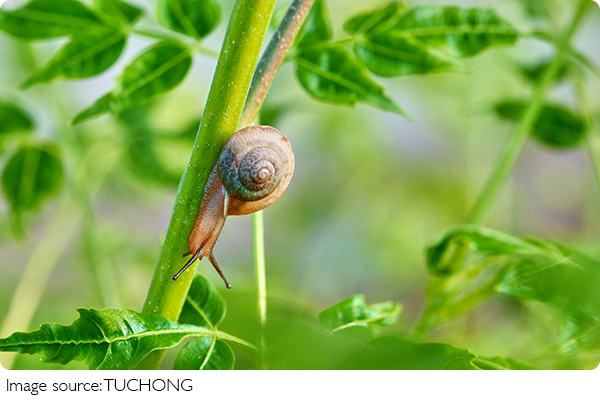Snail: 7 Wild Facts!

Great Day, Lykkers! When you think of snails, slow motion and slimy trails probably come to mind.
But these tiny creatures are far more complex than they appear.
Beneath the shell lies a world of bizarre biology, survival superpowers, and evolutionary brilliance that most people overlook.
Let’s dig through the slime and reveal seven wild facts about snails that may just change the way you see them!
1. Some Snails Can Hibernate for Years
Certain land snails, especially desert species like the Sphincterochila boissieri, can enter a state called estivation—a dry-weather equivalent of hibernation. During this time, they seal themselves inside their shells using a layer of mucus that hardens into a protective barrier, conserving moisture and reducing metabolism. Astonishingly, some have been known to survive for up to three years without food or water while in this state.
2. Their Teeth Are Stronger Than Steel
Believe it or not, snails have teeth—thousands of them, in fact. The radula, a ribbon-like tongue covered in microscopic teeth, is used to scrape or cut food. In some marine species like the limpet, these teeth are composed of a material even stronger than steel on a per-weight basis. Researchers are now studying this biological marvel to develop ultra-durable synthetic materials.

3. They Have a Built-in GPS
Snails don’t just wander randomly. Many species use geomagnetic cues, chemical trails, and memory to navigate. Garden snails (Cornu aspersum), for example, can return to the same hiding spot day after day. Some freshwater snails even detect the Earth's magnetic field to orient themselves in flowing streams.
4. Snails Can Change Genders—Or Be Both
Most land snails are hermaphrodites, meaning they have both male and female reproductive organs. This unique ability gives them flexibility when mating, especially in environments where potential partners are scarce. In some species, snails will duel using "love darts," calcium-rich spikes that increase reproductive success—an odd ritual with evolutionary advantages.
5. Some Snails Breathe Through Their Skin
While many snails have lungs or gills, some aquatic species, like those in the Planorbidae family, can absorb oxygen directly through their skin. This adaptation allows them to survive in oxygen-poor environments where other aquatic creatures would struggle. It's part of why snails are often used as bioindicators for freshwater ecosystem health.
6. Their Slime Is Medicinal Gold
Snail slime is not just goo—it’s packed with glycoproteins, enzymes, and antioxidants. In recent years, it’s been used in cosmetics and wound-healing treatments, especially in Korean and French skincare industries. The slime from Helix aspersa (common garden snails) has shown promise in stimulating collagen and reducing inflammation, making it a hot topic in regenerative medicine.
7. Snails Have Been to Space
Yes, really—snails have been astronauts. In several space biology experiments, freshwater snails were launched into orbit to help scientists study how micro-gravity affects their balance systems. Because they rely heavily on statocysts (tiny balance-sensing), they serve as excellent models for understanding how living beings adapt to zero gravity.
From their bizarre mating rituals to their steel-tough teeth, snails are quietly extraordinary. These small gastropods hold secrets that touch everything from climate science to material engineering. The next time you spot a snail crawling along a leaf, consider the remarkable complexity hidden beneath that simple spiral shell!
Snail Facts You Probably Didn't Expect
Video by Facts Net


